Viewing physical security as a ‘system’ within the broader school safety and security enterprise can help schools better detect, delay, and respond to threats – without requiring school staff to become security experts or compromising the broader educational mission. The Cybersecurity and Infrastructure Security Agency explains what a systems-based approach to layered physical security entails and how it can support schools in creating safer and more secure learning environments.
Schools can face a variety of challenges when it comes to minimizing the risk of acts of crime and violence on campus. Planning for and implementing a school physical security system is a complex undertaking that requires schools to balance issues of safety with teaching and learning, school operations and culture, and families and the surrounding community. As many involved in the school community know, those who often bear responsibility for creating comprehensive school safety plans may not always be experts in physical security.
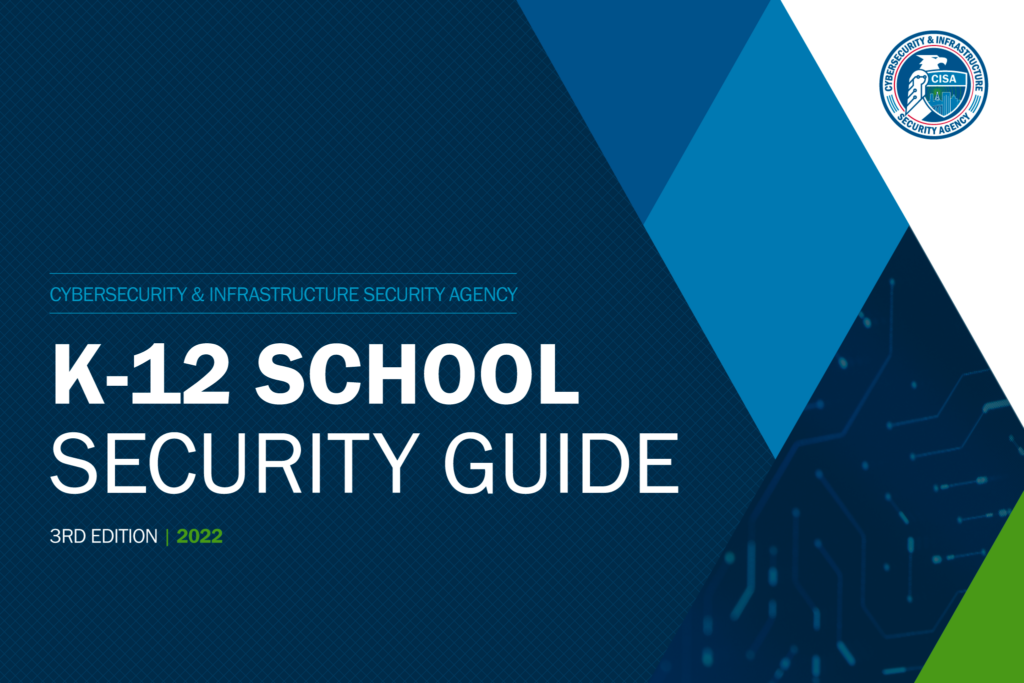
The 3rd edition of the K-12 School Security Guide, created by the Cybersecurity and Infrastructure Security Agency (CISA), is designed to help K-12 schools and districts adopt a systems-based approach to school physical security planning and implementation. A systems-based approach is a holistic method that focuses on how a system’s constituent parts are related to one another and work together within that system. It views physical security as a ‘system’ within a broader school safety and security enterprise that also includes and complements prevention and response and recovery efforts. By taking this approach, schools can minimize the chance that measures put in place to protect and mitigate against threats will undermine school climate or the educational experiences of students and staff.
The guide presents five key themes that demonstrate how a systems-based approach to layered physical security can help create safer environments for schools of all geographical contexts and at various levels of maturity in their security planning process.
1) Each school is unique. There is no one-size-fits-all approach to physical security.
No two schools in the United States are identical. Tens of millions of students attend schools spread out across rural, suburban, and urban locations throughout the country. Student bodies vary in size, age, and demographics, among other factors, and school campuses and buildings come in various shapes and sizes.
Because each school is unique and contends with an individual set of circumstances, there is no one-size-fits-all approach to physical security. Different combinations of security capabilities will provide varying levels of benefits across diverse K-12 campuses. Additionally, schools often take distinct approaches to physical security to ensure that they do not interfere with the efforts they are taking to maintain a positive and welcoming school climate.
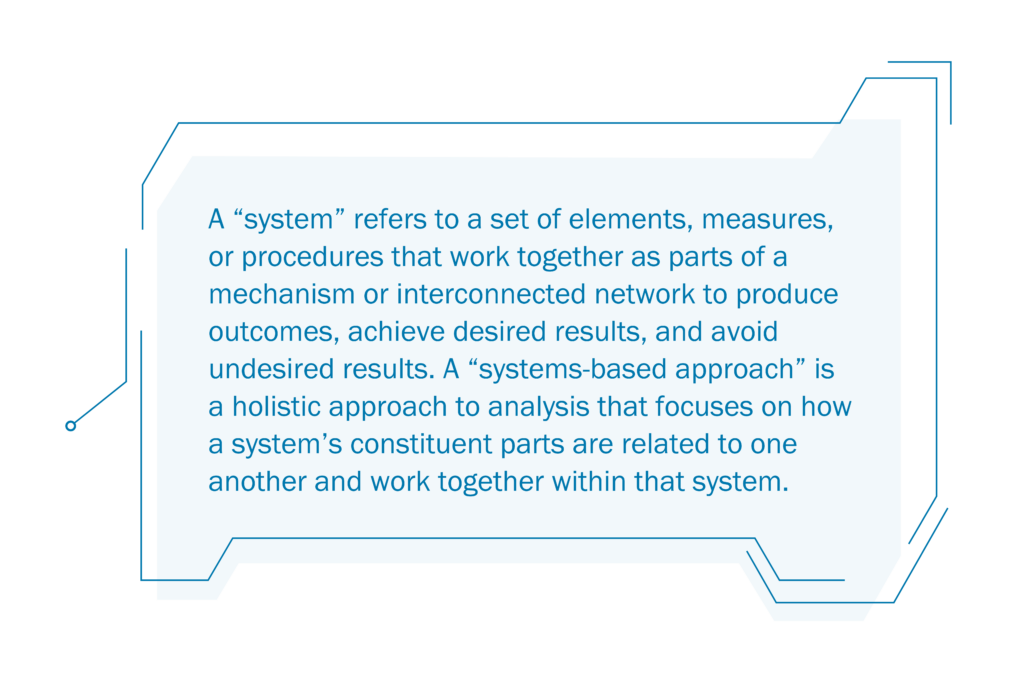
2) Taking a systems-based approach to physical security can help schools address their unique circumstances and ensure that protection and mitigation measures complement measures to prevent violence and respond to and recover from violent incidents.
Physical security, which focuses on protection and mitigation measures, is just one piece of the school safety and security puzzle. These measures affect and interact with efforts to prevent violence, such as mental health support and school climate, as well as emergency response and recovery activities.
Taking a systems-based approach requires viewing physical security as a component of the broader school safety system. Before implementing or enhancing physical security measures, schools should consider the impact such actions could have on prevention, response, and recovery activities. For example, could certain security measures degrade school climate, or hinder the response capability of law enforcement or first responders? Viewing physical security from this lens can help schools assess the compatibility, dependencies, and impacts of individual measures on each other and on the system as a whole.
3) Taking a layered approach to physical security ensures that the system works in an integrated way to detect, delay, and respond to threats, and helps to prevent single points of failure.
Implementing a layered approach to school physical security systems and working from the outside in allows schools to think through measures, training requirements, personnel, and policies that apply to the various areas of a school campus. Schools should generally consider four layers when planning for physical security: the grounds perimeter (for example, the outermost boundary of the campus); school grounds (for example, athletic fields and parking lots); the building perimeter (for example, entrances into the main building and additional buildings); and the building interior (for example, classrooms, hallways, and common spaces). By organizing a physical security system into layers, schools can better ensure that the system contains interconnected support elements that help avoid gaps in protection and mitigate against single points of failure.
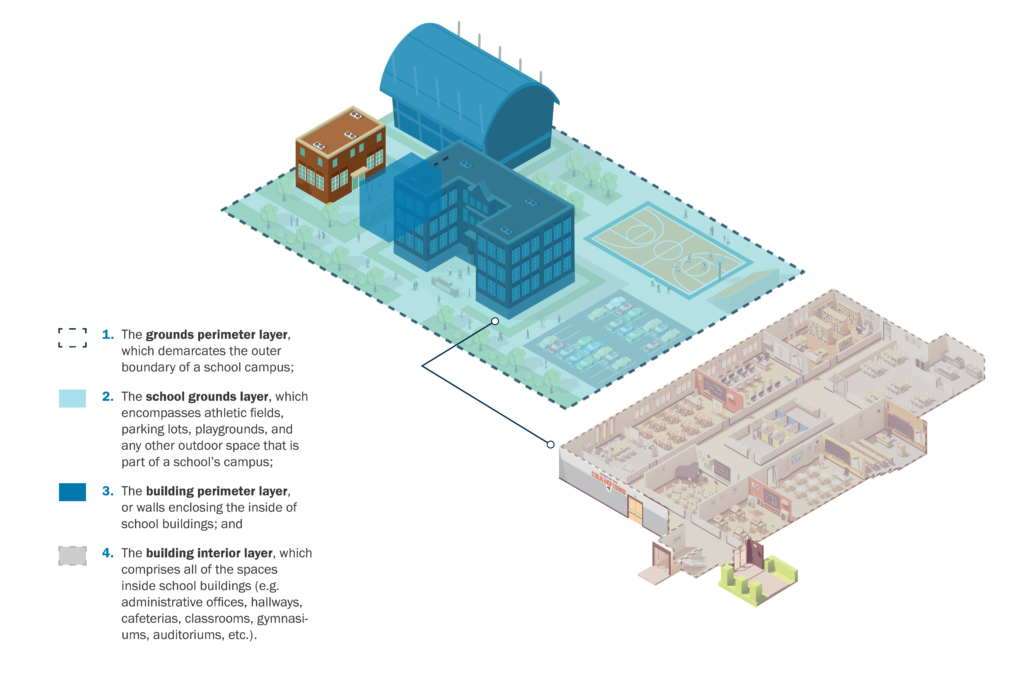
Consider the example of an outside attacker attempting to enter a school with highly protected grounds. If the attacker successfully breaches a barrier that surrounds school grounds, limited and monitored entry points may delay or deter the intruder from entering the building interior. The extent to which schools prioritize specific layers over others will depend on each school’s unique context.
4) A layered, systems-based approach to physical security ensures that all physical security equipment and technology; site and building design features; personnel and staff; policies and procedures; and training programs work cohesively to provide the most effective security benefits possible.
For schools, taking a systems-based approach to layered physical security means ensuring that various security measures across a school campus work together in an integrated way, and that planning incorporates the relevant policies and training programs that must also be in place for the entire system to function effectively.
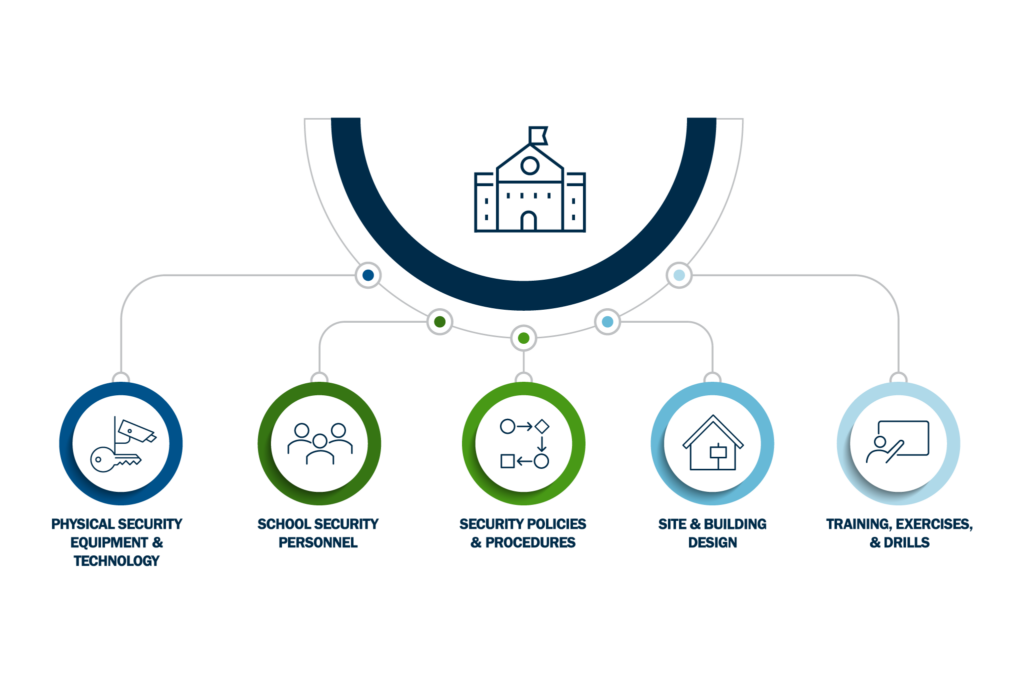
Physical security measures are most effective at providing protection and mitigation benefits when they are installed to function alongside and in concert with other measures as part of a system. For instance, entry screening technology such as I.D. card or badge readers might offer intruder detection capabilities at designated school entry points; but, if no one is manning these entry points, there is a smaller chance that the technology will delay or stop intruders from entering a building without authorization.
Clear personnel roles, policies around operating and monitoring various technologies, and procedures detailing what actions should follow the detection of a threat are critical factors that can ultimately determine the level of security benefits these measures will provide. Regular training also plays a crucial role, providing school staff and personnel the opportunity to practice their roles in simulated emergencies and increases preparedness for worst-case scenarios.
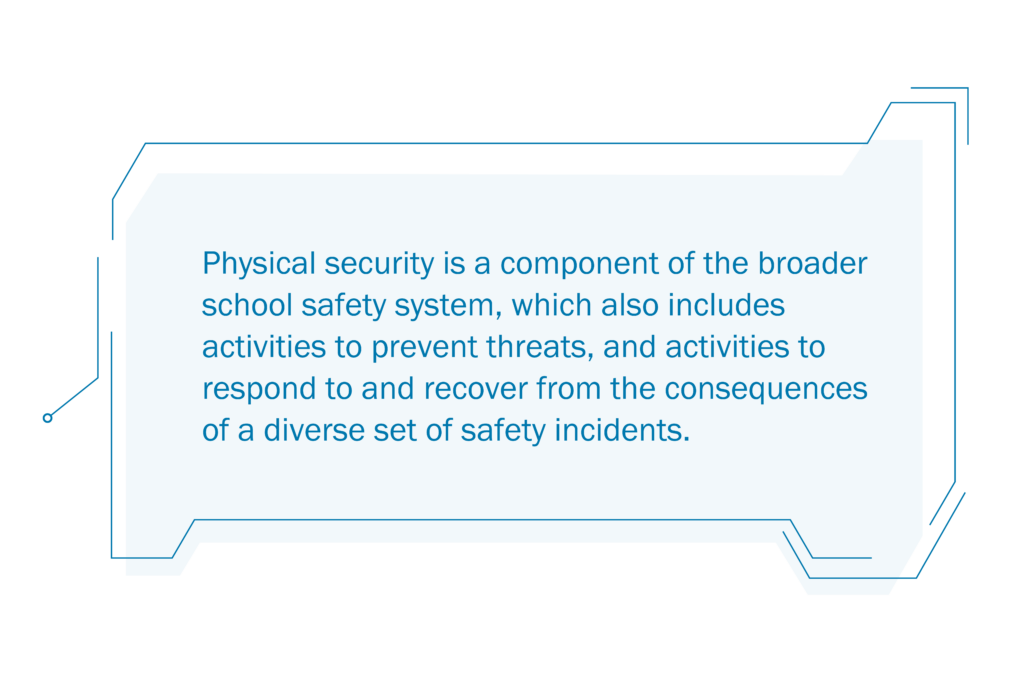
5) Schools should build a multidisciplinary team that will lead the physical security planning process, to ensure that the needs of diverse stakeholders are met, and that response capabilities are enhanced.
Implementing or enhancing a school physical security system requires careful planning that begins with the formation of a multidisciplinary team. A planning team that is inclusive and comprised of key school personnel as well as local community organizations, first responders, and families will ensure that a school’s approach to security accounts for the needs of diverse groups, including those with special needs and considerations. Through this team, schools can then follow a process that includes gathering local data, conducting threat, risk, and vulnerability analyses, and developing a comprehensive safety plan that meets the specific needs and circumstances of that particular school.
Throughout the process, schools should also consult with local first responders to ensure that fire, police, and other emergency personnel are aware of any newly implemented security features and confirm that they are not in violation of local codes or regulations. Repeating this planning process on an annual basis can help schools maintain a well-functioning security system that’s set up for the long-term.
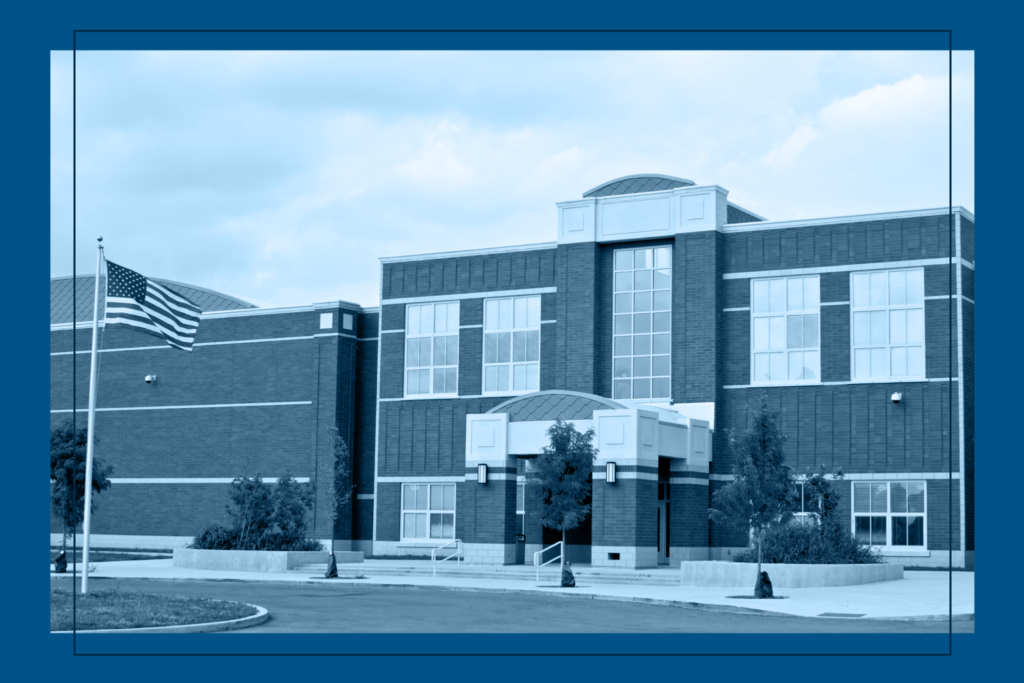
Creating Safer Schools
School violence is a complex issue that requires school leaders, security personnel, and other members of the K-12 community to approach safety and security through a multidisciplinary and holistic lens. Throughout the process, schools should consider physical security measures that integrate with their prevention, response, and recovery efforts, and that are best suited for their unique needs and circumstances. By taking a systems-based approach towards layered security, schools can create safer learning environments and still keep the focus on their core mission: the education, development, and well-being of students.
Learn more about the K-12 School Security Guide and access its accompanying web-based assessment tool and trainings at cisa.gov/k-12-school-security-guide-product-suite.
Please note: The U.S. Department of Homeland Security (DHS) does not endorse any individual, enterprise, product, or service and does not mandate or prescribe practices, models, or other activities described in this article. Implementation of the information presented in this article is purely voluntary, and a decision not to implement these voluntary measures will not result in any enforcement action by DHS.

